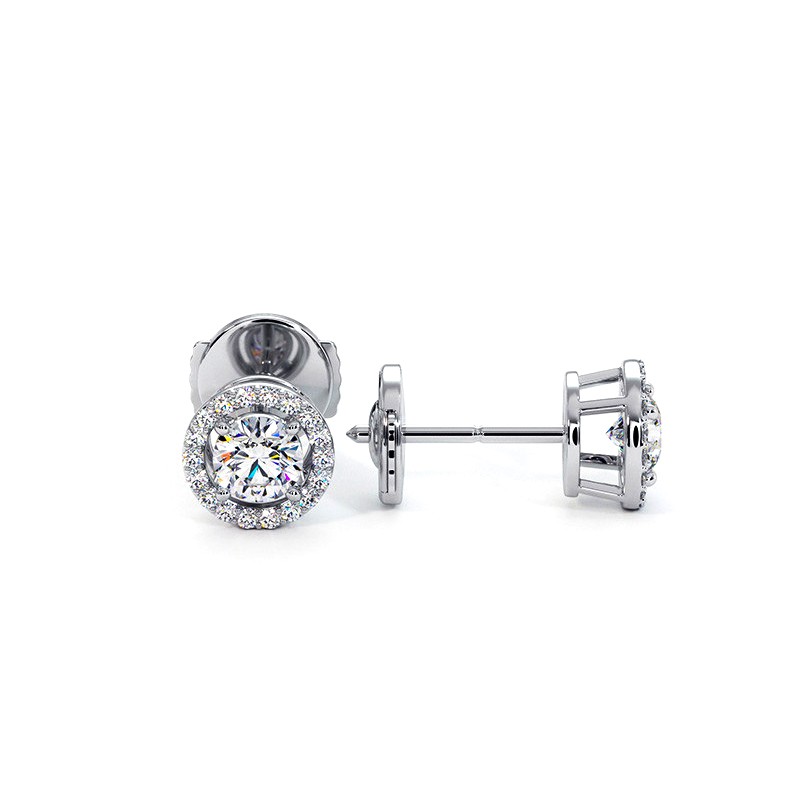Letter of Intent for Marriage: Advice, Meaning and Inspiring Examples
 ,
Jewelry News
,
Jewelry News


You are preparing for your religious wedding and you are asked to write a letter of intent ?This document, also called declaration of intent to marry, is one of the essential steps before receiving the sacrament of marriage in the Church. Much more than just a text, it's a intimate speech, a way to put in writing your commitment, your values, and your shared life project.
In this article, the House Celinni accompanies you at every step of this particular drafting process. You will discover the profound meaning of this letter, the pillars to incorporate according to Catholic tradition, some customizable models, as well as concrete advice for writing a sincere, structured and moving text.
What is a letter of intent for religious marriage ?
The marriage intention letter, also known as a declaration of intent, is a document written as part of a Catholic religious wedding. It is typically requested by the priest or deacon who guides the couple through their preparation for the sacrament of marriage. This personal text is meant to express each future spouse’s understanding of marriage, as well as their spiritual commitment to building a home rooted in faith.
Unlike the vows exchanged during the ceremony, this letter is not public and is not read aloud. It is addressed to the officiant, who includes it in the marriage file. While it holds no legal value, it carries profound symbolic and religious meaning. It is a testimony of intent — the intention to unite before God, freely, sincerely, and enduringly.
In short, the intention letter is not an academic exercise or mere formality. It is an authentic expression of your faith, your values, and your shared story.
.jpg)
Why is writing a declaration of intent essential?
Affirming a free, faithful, and informed commitment
The Church sees marriage as a sacred and indissoluble commitment. Before celebrating this union, the priest must ensure that both future spouses fully understand its profound meaning. The declaration of intent allows each partner to demonstrate that they are entering into this union freely, consciously, and with maturity.
It is also a way to confirm that marriage is a shared project—not imposed—and that it is built on solid foundations: respect, love, loyalty, and faith.
Demonstrating a shared Christian life project
This document is also an opportunity for the couple to show their adherence to Christian values: the desire to build a united home, to remain faithful to one another, to welcome children, and to raise them in the faith.
Through this letter, the priest can better understand the couple's spiritual journey, their motivation for choosing a church wedding, and accompany them more personally in their preparation.
Special cases: mixed or interfaith marriages
In the case of a mixed marriage (between two Christians of different denominations) or a disparity of cult (between a Christian and a non-baptized person), the letter allows the couple to clarify their mutual commitment to respecting each other’s faith and the educational plan for future children.
It is a sign of goodwill and openness, showing that the couple has considered the challenges of their religious differences—not as a barrier, but as a source of richness.
What should a marriage intention letter include?
The religious marriage intention letter is a free-form text, but certain elements are essential for it to be meaningful and acceptable to the Church. It should reflect personal thought, a sincere will to commit, and an understanding of Christian values.
The 4 pillars of Catholic marriage to integrate
The Catholic Church bases the vocation of marriage on four fundamental pillars. Each future spouse must demonstrate that they deeply adhere to it.
Freedom
Marriage cannot exist without a free consent. This is a personal choice, without family, social or religious pressure. Mention that you are committing freely show that your decision is mature and assumed.
Loyalty
Fidelity is at the heart of the sacrament of marriage. It is the promise to support one another, to show mutual respect, and to remain loyal even through hardships. It forms the foundation of a stable and trusting love.
Indissolubility
The Christian marriage is a commitment for life. This is not about a temporary union, but an indissoluble, sacred bond. You must express your desire to build a lasting union, in joy as well as in difficulty.
Fertility
Finally, the spouses must be open to life. This not only means wanting children, but also welcome, accompany, educate, in love and faith. This includes a generosity of the heart, turned towards the other and towards future generations.
Your story: foundation of sincerity
For your letter of intent to be authentic and touching, do not hesitate to share your personal story.
Meeting, journey, common projects
How did you meet? What brought you closer? What have you been through together? Your journey gives meaning to your commitment.
Desire to establish a home in faith
Explain why you have chosen the church wedding, and how this represents a life project centered on Christian love, the respect, and the solidarity.
Place of God in your commitment
Express how your faith accompanies you in this union. What does God mean in your relationship? What place do you wish to give Him in your couple and family life ?
How to properly write your letter of intent ?
The letter of intent does not require a great pen, but sincerity, clarity, and a certain structure. Here's how to avoid the most common mistakes and succeed in your writing.
Avoid common pitfalls
Copy a model without customizing it
Drawing inspiration from an example can be helpful, but for your letter to be meaningful, it must reflect your own story and personal convictions. The Church expects a sincere expression, not just a copied or generic statement.
Using language that is too formal or too poor
A text that is too stiff or on the contrary too simplistic can give an impression of distance or lack of involvement. Use your words, in a style that suits you, while remaining respectful and clear.
Our tips for successful writing
Write with the heart
The priority is sincere emotion. Write as if you were speaking to God, to your future spouse, or to your priest. Don't try to be literary, but to be deep and honest.
Be concise, authentic, structured
A good letter consists of three parts:
- A introduction explaining your approach
- A development Addressing the pillars of marriage, your relationship, your values
- A conclusion expressing your trust, your hopes, your thanks
Include a biblical or symbolic passage
A quote from the Bible or an inspiring word can add depth to your letter. For example:
"Love is patient, love is kind..." - 1 Corinthians 13
Handwritten or digital: what does the Church say ?
Practical information according to the parishes
Some parishes accept typewritten letters (typed on the computer), others prefer a version. handwritten. This varies depending on the diocese. Consult with your priest.
Symbolism of handwriting
A handwritten letter has a strong emotional and spiritual value. It shows that you have taken the time to write it, to carefully choose your words. It can even be preserved as a souvenir, a valuable testimony for your future.
Marriage intention letter templates
To assist you in this crucial step, we have envisioned several options. letter of intent templates, to be freely adapted according to your story, your values and your faith journey. These texts are inspirations, not fixed models.
Model 1 - Between two Catholics
This model is suitable for believing couples who have grown up in the Catholic faith, wishing to establish a traditional Christian home.
"Me, [First and Last Name], in view of my marriage with [First and Last Name], the [date] at the church of [lieu], wish to express my deep commitment to building a life project based on faith, love, and loyalty.
We have chosen a church wedding to place our union under the gaze of God. We firmly believe that this sacrament will accompany us throughout our life.
Together, we want to build a home open to life, faithful to Christian values, and based on respect, tenderness, and prayer."
Model 2 - Mixed Marriage (Catholic / Other Christian)
Perfect for Christian couples of different denominations (e.g.: Catholic and Protestant). Discuss your common values.
"We belong to two different Christian traditions, but we find ourselves in the same faith in God and in the desire to live a deep and faithful love."
"We choose to marry in the church to unite our lives under the gaze of Christ, committing ourselves to respect and honor our spiritual differences. We wish to pass on to our future children a living and open faith, rooted in love and understanding."
Model 3 - Disappeared Marriage (Catholic / Non-believer or other religion)
Mention mutual respect and your desire to raise your children in the Christian faith, while valuing openness.
"My future spouse does not share my faith, but we have built our relationship on universal values: respect, love, truth. I commit to nurturing the spiritual dimension of our couple through my faith and to pass on these values to our future children."
I believe that our union can be a wealth, a place of dialogue between beliefs, where everyone can flourish. I hope that our marriage is blessed by God and that our home is a light of love in this world."
Model 4 - Couple with children
Show that you are already a family and that marriage comes to seal a living and loving union.
"Together, we have already built a family. Our children are growing up in a home of love, kindness, and faith."
Religious marriage is for us a way to honor what we experience every day and to entrust our future to Christ. We wish to pass on to them solid benchmarks, an example of lasting union, and a faith embodied in daily life."
Model 5 - Unconventional conversions or faith journeys
If you have recently come closer to faith or converted, share your sincere journey.
"My journey toward faith has been long and at times uncertain, but deeply genuine. It is through my future spouse that I rediscovered the Church, prayer, and the meaning of self-giving.
Today, I am ready to unite with [First Name], before God, in full freedom and truth. We wish to build a home where faith is alive, united, and fruitful. This marriage is a sacred commitment that I make with humility and joy."
At Celinni, every commitment deserves a unique alliance.
At Celinni, Jewelry House founded in Paris in 1967, we believe that every love story is unique. That's why we accompany you in choosing the wedding ring or from the engagement ring who will embody your eternal commitment.
A engagement ring is much more than a piece of jewelry: it's the symbol of a promesse, of a life project, of a love sealed in faith and sincerity.
We offer you some creations custom-made, made in our workshop with certified natural diamonds, and shaped in gold white, yellow gold or rose gold. Each ring is designed to reflect your story, your values, and your ideal of union.
Your wedding jewel thus becomes the visible extension of your letter of intent : a timeless, precious object, bearer of meaning.


Round Diamond Engagement Ring Promesse
- -15%


Cushion Diamond Solitaire Ma vie
- -15%


Half Diamond Alliance Ma vie
- -15%


Half Alliance Round Classic Diamonds Promesse
- -15%


Traditional Round Diamond River Bracelet
- -15%


Diamond Pendant Elle
- -15%


Diamond Earrings Ma vie
- -15%


Black Diamond Stud Earrings
- -15%
Conclusion
The letter of intent to marry is not just a simple administrative document. It is a personal, spiritual, and deeply symbolic process. It allows you to express what religious marriage means to you, to share your beliefs, and to lay a solid foundation for a lifelong commitment.
Take the time to write this text with your heart, in prayer and reflection. Draw inspiration from examples, but above all, stay true to your experiences and your faith.
At Celinni, we are honored to accompany each couple in the celebration of their love, through the custom-made jewelry who embody values of loyalty, transmission and eternity.
FAQ - Frequently asked questions about the declaration of intent to marry
In most cases, each future spouse writes their own letter of intent. certain degree of personalization. This allows one to express their faith, commitment, and personal vision of religious marriage. However, some parishes may allow a common letter, provided thatelle reflects the thoughts of both spouses. Therefore, it is important to ask for the opinion of the accompanying priest.
Yes, but only if the priest or the deacon allows it. Writing a joint letter can be relevant for some couples, especially if they want to show a completely shared life vision. However, the Church also values personal expression: it is therefore often recommended to write two individual letters, unless otherwise indicated.
There is no imposed length, but a page is generally sufficient. A letter that is too long can lose clarity, while a letter that is too short might lack meaning. Aim for between 300 and 500 words, structured, sincere and written from the heart.
This depends on the requirements of your parish. Some require a handwritten letter, thus enhancing the personal character and symbolic commitment. Others accept a typewritten version. It is recommended to inquire with the officiating priest. If possible, prioritize the manuscript version, often more significant.
Yes, of course. The priest is not there to judge you, but to guide you in your approach. He can proofread your letter and suggest areas for improvement, especially if certain important elements (such as the four pillars of marriage) are absent or poorly developed.
Absolutely. A sincere letter of intent can certainly include past experiences, whether it's a previous marriage or a complex faith journey. As long as it is expressed with modesty and truth, it strengthens the credibility and depth of your commitment. current, focused on your desire to progress in faith.




































